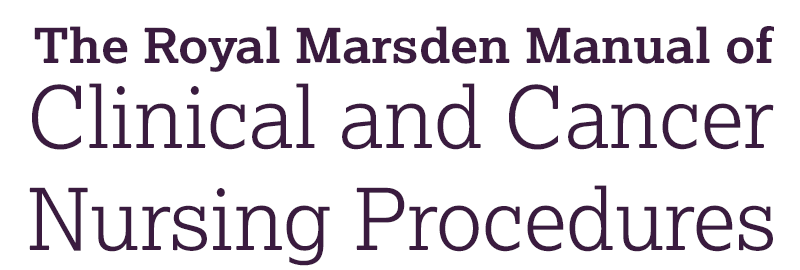Chapter 2: Admissions and assessment
Skip chapter table of contents and go to main content
Source: Adapted from Bickley and Szilagyi ([9]), Rushforth ([74]).
Evidence‐based approaches
Rationale
Before commencing a physical assessment, a detailed health history should be taken. The patient's present complaints, the findings of the history taking, and the nurse's knowledge of anatomy and physiology will determine which body system to examine and what investigations are required (Price et al. [66]). Furthermore, it is also important to consider the patient's entire problem, including from social and psychological perspectives (Barrows and Pickell [7]).
From the history, a list of differential diagnoses will have been generated and the examination should seek to confirm, refute or further establish whether each of the differential diagnoses is a possibility or not. According to Weber and Kelley ([88]), the process can be divided into the following steps:
- Identify abnormal data or the presenting complaint.
- Cluster the data.
- Draw interferences and identify the problem.
- Identify differential diagnoses.
- Analyse each diagnosis.
- Confirm or refute each potential diagnosis.
- Document the conclusion.
Each system‐based examination is divided into the following categories:
- inspection (looking)
- palpation (feeling)
- percussion (tapping)
- auscultation (listening).
Inspection
Inspection is simply observing the patient while looking for the presence or absence of physical signs that confirm or refute the differential diagnoses obtained from the history (Dover et al. [23]). A general survey of the patient should include observations of posture, gait, height and weight, posture, mood and alertness (Bickley and Szilagyi [9]).
Prior to taking a history, the nurse should introduce themselves to the patient and define their role. The patient may be particularly worried that the examination will identify a serious problem so it is important to build a rapport and trust. The nurse should provide the patient with their full attention and use appropriate facial expressions. After introducing themselves, the nurse should ask the patient open‐ended questions to facilitate conversation (Jarvis [41]). Closed questions can be used to ask for specific information and clarifying questions can be used where appropriate. The nurse must ensure the patient feels confident to share information.
During the interview and the physical examination, the nurse should continue to observe the patient's behaviour, general demeanour and appearance. Having the opportunity to take the patient's history often allows subtle clues about their health to be identified. For example, a patient's voice can provide important clues about neurological and respiratory functions (Baid [5]).
The precise points to consider during inspection are informed to some extent by the history; however, inspection starts as soon as the nurse first sees the patient. This is called the ‘global view of the patient’, ‘general survey’ or ‘first impression’ (Innes et al. [39]). Inspection will then continue throughout the physical examination (Seidel et al. [77]). Typically, the first impression includes looking at the patient as a whole, examining the nails, skin and eyes, and assessing vital signs (Rushforth [74], Swartz [81], Tidman [84]). The following should be considered:
- General appearance: are they well kept? Are they wearing appropriate clothing?
- Nutrition: do they look well nourished?
- Pain: do they appear to be in any pain? What is their facial expression?
- Nausea and vomiting: are they retching?
- Posture and gait: how do they get into the room? Walk? Limp? Wheelchair?
- Orientation: are they orientated to time and place? (see Chapter c14: Observations)
- Consciousness: what is their level of consciousness? (see Chapter c14: Observations)
- Symmetry: are they moving both sides of their body symmetrically?
- Speech: is their speech impaired?
Once inspection has been completed, the nurse should move on to the system(s) of concern and examine the area(s) closely.
Palpation
Palpation requires use of the whole hand (including the palm and the full length of the fingers) using touch to feel and assess an area (Bickley and Szilagyi [9], Rushforth [74], Swartz [81]).
This includes assessment of:
- texture
- tenderness
- temperature
- contours
- pulse
- lymph nodes
- moisture
- mobility.
The order of palpation is not important unless there is an area of pain or tenderness, in which case always examine that area last. There are two variations of palpation: light palpation and deep palpation:
- Light palpation requires a gentle touch, depressing the skin with one hand to a maximum of 2 cm (Rushforth [74]). When lightly palpating, temperature, tenderness, texture, moisture, elasticity, pulsation and any superficial organs or masses should be assessed (see Figure 2.21).
- Deep palpation uses the same technique as light palpation but often two hands are used, one on top of the other at a depth of around 4 cm, as illustrated in Figure 2.22. When palpating deeply, internal organs and masses should be assessed. As the nurse palpates, they should watch the patient's face assessing for any discomfort or tenderness (Rushforth [74]).
Percussion
Percussion helps to identify organs, allowing assessment of size and shape. The technique is done by laying the tip and first joint of the middle finger flat on the patient, ensuring that no other part of the finger or hand is touching the patient. The joint is then struck in a quick, fluid movement with the fingertip of the middle finger of the other hand (Bickley and Szilagyi [9]), as illustrated in Figure 2.20. The sound produced by the impact is heard as percussion tones called ‘resonance’ (Seidel et al. [77]). The percussion technique is the same for all the structures of the body.
The sound produced through percussion can help to identify whether the structures are solid or filled with liquid or air (Table 2.3). It takes experience and practice to be able to hear and identify the different sounds.
Table 2.3 Different sounds heard on percussion
| Sound | Quality | Example of source |
|---|---|---|
| Flat | Soft, high‐pitched, dull sound | Thigh |
| Dull | Medium‐level, thud‐like sound | Liver, spleen |
| Resonant | Loud, low‐pitched, hollow sound | Lung |
| Hyper‐resonant | Very loud, low, booming, hollow sound | No normal organ |
| Tympanic | Loud, high‐pitched, drum‐like sound | Gastric air bubble |
Auscultation
Auscultation involves listening to various sounds in the body using a stethoscope (Bickley and Szilagyi [9], Rushforth [74]). A stethoscope is a medical device and has a bell and a diaphragm (Figure 2.4), which is often used to listen to internal sounds of the human body. The bell should be used to hear low‐pitched sounds, for example murmurs; the diaphragm should be used when listening to high‐pitched sounds, for example bowel sounds. A good‐quality stethoscope will aid diagnosis as more subtle sounds will be heard clearly.






